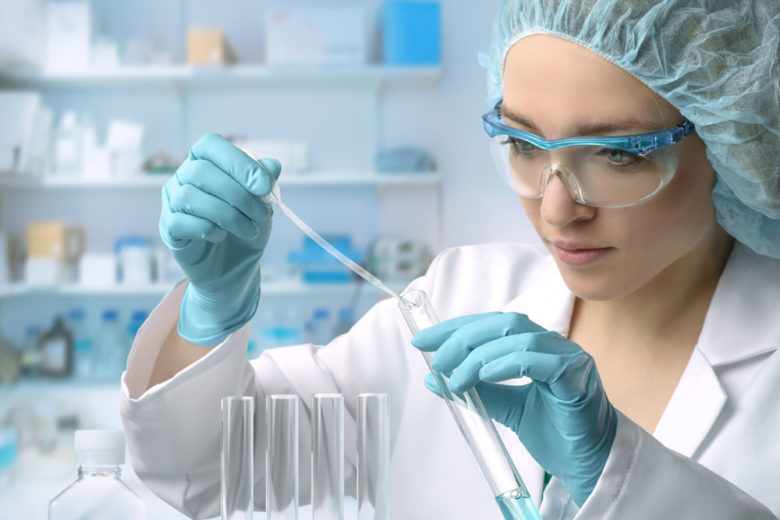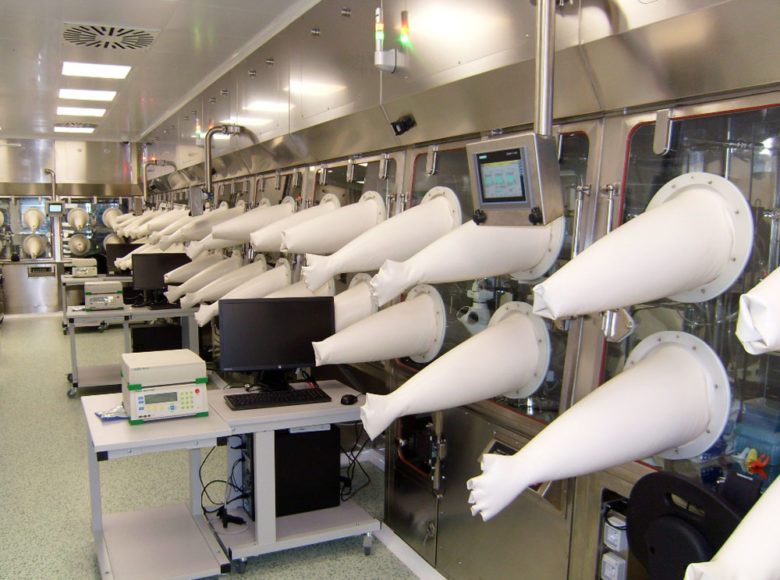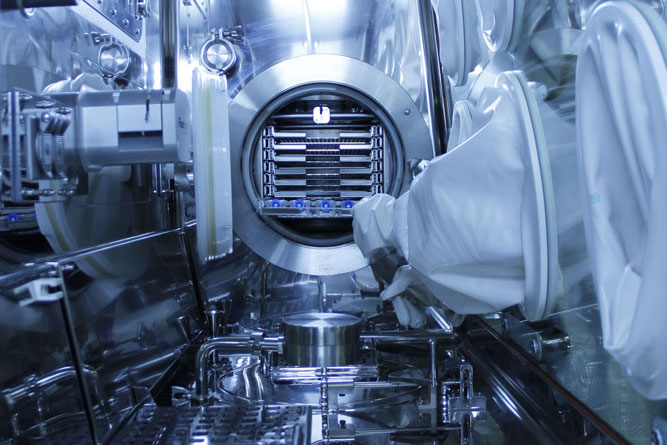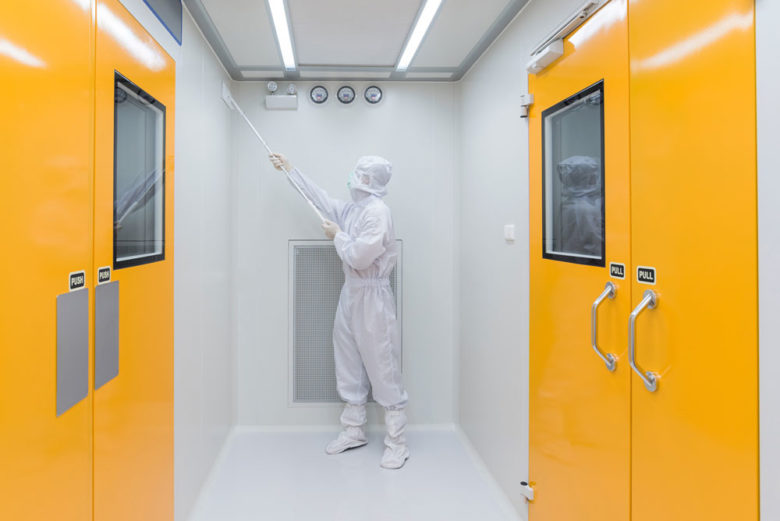- Products
- Video
- Events
- News
- Landing
- Pages
¡Advertencia! El contenido en esta página está disponible solo en los siguientes idiomas: Inglés - Italiano
We well know that the origin of what we could call a revolution of the cell therapy sector began with the entry into force of the famous legislative decree 1394/2007, which regulated, classified and assimilated medicinal products for human use of cellular origin to sterile drugs and, therefore, regulated their production using the same rules adopted for the latter. Prior to this decree, cell-based products were not considered medicinal products.

Despite a complex environment many products evolved anyway. Some of them along different and often complementary paths, and some of these products have gained the possibility of being transplanted, in the context of clinical studies, into compassionate therapies and even (very few to tell the truth) as products placed on the market, authorized to be traded throughout the European Union by the European Medicine Agency (EMA).
What did decree 1394/2007 establish (and still establishes)?
Basically, for our purpose we should keep in mind three fundamental aspects (the decree deals with the whole route of the drug, from the authorization to production to packaging, from Clinical Trials to Pharmacovigilance and so on):

The result was that many products, quite promising a few years ago, in order to achieve a regular clinical use suffered a slowdown necessary for the adaptation of the structures and only in more recent times, clearly just a few years ago, they started to regain (or gain for the first time) the status of products in possession of the MA (Market Authorization) issued by the EMA.
However, the legislation, in particular the Annexes that regulate the GMP, in these years, in the application context of Advanced Therapy Medicinal Products, have proved to be only partially adequate and the same have started to undergo a review process that has improved and better «framed” the context of use. Under focus are the changed needs and the inevitable progress that technology has made in recent years by making the previous processing opportunities, if not obsolete, at least worthy of revision aimed at a more flexible use, suitable for a technological and experiential context that has heavily changed in recent years.
Therefore, since May 2018, the GMP for Advanced Therapy Medicinal Products (ATMP) specifications are operational.
A concept clearly stated and often reiterated by the document refers to the Pharmaceutical Quality System (PQS), i.e. the set of measures put in place by the manufacturer, with the aim of ensuring that medicinal products are of the quality required for the intended use (EudraLex, Vol. 4 Ch. 1).
The concept applies and must be demonstrated at the production site level, but in certain cases it must also be demonstrated at the company level (in the case of several production sites). The criterion is well expressed in the dedicated document, therefore we don’t need to expand on the matter.
Another quite important concept for this edition of the GMP specifications for Advanced Therapy Medicinal Products is the “risk-based approach”.
Basically, the legislator agrees that ATMP products are complex and often their behavior is not 100% known, especially in the early stages of development. Therefore, their risk profile may be different and it may depend on many factors: the production process, the characteristics of the starting material, the type of cultivation that is adopted and even when all the conditions are the same, two production batches have a certain degree of variability due to the very nature of the organic product, whose cells are by nature «individual», linked to the DNA of the same (especially in autologous processes) and not differently, allogeneic processes can show different behaviors between materials from different donors.
These products represent the most exposed front of medical science and the verification of their degree of quality presents specific challenges. For this reason, the regulation establishes that it is necessary to recognize a certain level of flexibility in the evaluation of the product, so that the manufacturer can implement the measures that are most appropriate in relation to the specific characteristics of the processing and maturation of the product itself.
The part of the Risk Based approach certainly deserves further study.
We cannot describe all the occurrences of the word «risk» in the document because they would be hundreds and this contribution would become unmanageable. However, we can put together a series of considerations with the aim of underlining the role of a risk analysis in the production of ATMPs, when the process is performed inside a GMP facility in accordance with the guidelines, and mention the possible implications for each of the topics examined, including specific possible alternatives taken into account by the regulation itself.

As already mentioned, the complexity of the Advanced Therapy Medicinal Products poses specific questions in relation to the fact that the finished product could have in itself a certain level of variability that is essentially linked to its biological nature and therefore to a number of factors that affect the final result, in a manner substantially different from traditional pharmaceutical chemistry.
Two other factors are added to this intrinsic variability:
This need for a flexible approach can be based on the following considerations:
However, this flexibility must not lead us to believe that it is the legislator’s intention to lower the guard: it is in fact clearly stated (point 2.13) that the quality, safety and efficacy requirements of the Advanced Therapy Medicinal Products, also in a risk-based approach, must be guaranteed for all drugs of this type whether they are developed in an academic, industrial or hospital setting.
Furthermore, the following point 2.14 reads,
«The manufacturers are responsible for the quality of the Advanced Therapy Medicinal Products they produce. The Risk-Based approach allows the manufacturer to design the organizational, technical and structural measures to be put in place in order to be in agreement with the GMPs and thus ensure quality regarding the specific risks of the product and the manufacturing process. The manufacturer is responsible for the implementation of control/containment measures that are necessary to address specific risks of the product or manufacturing process».
The document (which is erroneously we saw reported as a regulation in some papers, but in reality is a Guideline, i.e. a support for interpreting the law in the specific context of the Advanced Therapy Medicinal Products) is structured according to what is reported in the box. The analysis that we want to propose here, however, more than scrolling and analyzing the content of the single items, one by one, would like to try to highlight some key general topics and therefore examine how a given topic is discussed and which practical consequences it brings, in relation to the different contexts.
Structure of the Document
|
There is no doubt that, although we saw in the introductory pages, Advanced Therapy Medicinal Products present several challenges. One of the fundamental ones is certainly the concept of Asepsis and of aseptic production.
As mentioned earlier, this point is discussed across the entire document. One of the points where this topic is particularly mentioned is chapter 3., dedicated to personnel.
In particular, this section underlines:
| For the Legislator, the personnel involved is the main form of potential contamination of the aseptic environment |
While in chapter 4, dedicated to processing environments:
| The level of risk determines the degree of classification of the air, taking into account the nature of the product and the production process, with particular regard to its occurrence in an open or closed system. |

The concept of Asepsis is further discussed in Chapter 5, dedicated to equipment:
Position and method of use of the equipment must minimize risks. The connections must be made under aseptic conditions (A/B or isolator) or by means of sterilizable devices or suitable to maintain the sterility of the connection.
And in Chapter 7 – Starting materials and accessories
We are well aware that one of the most critical components of the ATMP production process – primarily in their autologous expression – is the collection of the material and its transfer to the production center. Indeed, in this case the starting material is a biopsy of the patient into whom, at a later stage, the cells will be transplanted again. This collection, although occurring in an intraoperative environment, escapes the GMP production control and therefore could be more easily contaminated. For this reason, it is possible that, in the collection phase, antimicrobials or antibiotics are used. However – the guideline reiterates, in the case of use of antimicrobials and/or antibiotics, their absence in the finished product must be guaranteed, unless explicitly mentioned in the marketing authorization or clinical experimentation of the finished product.
Chapter 9 offers us the opportunity, in relation to the analysis of asepsis during processing, to further explore the topic of closed systems.
Indeed, the Guideline states:
9.39. Most ATMPs cannot be sterilized terminally. In such cases, the production process must be conducted aseptically (i.e. in conditions that prevent microbial contamination).
And then later
9.41. Production in a closed system, in a positive pressure isolator or isolators: a grade D clean background area is acceptable.
The definition of a closed system is always controversial and the judgment on what is closed, but above all, on what can be considered closed from the beginning to the end of the process, is not univocal. Especially the phases of introducing the material into the closed system and then of the subsequent collection and final formulation are the subject of discussion or they are at least subject to interpretation because, necessarily, they involve a transfer of sensitive materials between different containers.
However, the guidelines are very clear in this regard, as in point 9.44 below
9.44. When materials are added to / extracted from the closed system without an aseptic connection (for example the use of sterile connectors, the use of filters), the system can no longer be considered closed
There are therefore different ways to resolve the issue:
Furthermore, to avoid incorrect interpretations, the guideline clearly specifies the opposite case, i.e. when working in a clean room with an open system under a laminar flow hood:
9.46 Production in an open system: In general, when the product is exposed to the environment (for example working under a laminar air flow), a clean A-grade area with a clean B-grade background area is required for aseptic preparation and filling.

Finally, to conclude this analysis, on the discussion of the asepsis concept within the new Guideline, we would like to focus (but this does not differ from what we already know for all the aseptic processes) on the validation of the process.
In fact, for the validation process, the guideline envisages the execution of a media-fill, in order to simulate the process itself in the real production conditions and check its compliance with the GMP conditions by verifying the sterility of the test result. For this reason, an appropriate medium (typically used for cell cultures) should be used and the test result should be recorded, as commonly done. The process simulation should focus on all operations performed by operators that involve open process phases.
Given that the concept of asepsis is strongly connected with the concept of «closure» of the system, in this brief in-depth note the next cross-cutting topic we intend to address is precisely the one that, in the document, revolves around the different aspects of the «closed system” concept.
This passage corresponds to a substantial difference with what has been done to date. We all grew up with the concept that in a clean room we process one product at a time – which in the case of an autologous cell therapy, for example, obviously corresponds to «one patient at a time». Obviously, this is perceived as a limiting factor – and indeed it is – but, with the methodologies and regulations in force so far, it does not seem possible to bypass this point using the traditional approach.
Under certain conditions, however, the regulation leaves a door open to go beyond this concept. Let us look at this in a logical order.
First of all, a concept reiterated – in point 4.17, confirming that nothing has substantially changed:
4.17. The production activities relating to different starting materials and/or finished products must be physically or temporally separated.
Now, it is clear, to work in a clean room, operating with several batches at the same time while following the principle expressed above does not appear to be very simple. Certainly, it is necessary to put together different pieces to guarantee physical and temporal separation. So, are there any concrete applications of this opening, apparently granted by the Guideline?
In the following point 4.18, under the «Physical separation” definition, the guideline comes to our aid by stating:
4.18. Concurrent production of two different ATMP batches in the same area is not acceptable. However, closed and contained systems can be used to separate the activities.
Therefore, the closed system constitutes, in itself, a physical separation, and for this reason, according to the guideline and after taking the appropriate precautions (risk analysis!), the production in closed systems involves the possibility that different batches are produced in the same environment, if this happens in the presence of a separation barrier.
The guideline could not be clearer as in the following point 4.19
4.19 The use of more than one closed isolator (or other closed systems) in the same room at the same time is acceptable, provided that appropriate mitigation measures are taken to avoid cross-contamination or confusion of materials, including separate ejection of the exhaust air from the isolators and regular checks on the integrity of the isolator.
You can have proof of practical application of this point in this concept study Comecer developed for Co.don AG:
However, there is a rule that completes the topic (4.20): if viruses are processed, there must be complete air expulsion, there can be no form of recirculation.

Furthermore, in the case of concurrent production of viral vectors, it is necessary to provide for a waste management that is closed, separate and unidirectional.
The essence of multi-product facilities:
|
Another important opening is found in point 4.23
4.23 Simultaneous incubation / storage of several batches within the same incubator is acceptable only if they are physically separated (e.g. distinct cell cultures in closed containers). When the simultaneous incubation / storage of different batches occurs as described above, the manufacturer must assess the possible risks and take appropriate measures to avoid any confusion of materials.
According to this rule, two different batches can be processed in the same incubator, provided they are in closed containers. The action must be justified and a demonstration must be given that the concept works and does not cause problems. Obviously, this concept cannot be applied when manipulating viruses.
The paragraphs analyzed so far show us how, for the legislator, the presence of closed systems can be a technological advantage for those who have this option. On the other hand, also from a practical and operational standpoint, it is clear that having closed systems available guarantees a higher level of segregation. Around this strengthened segregation we can successfully build our aseptic procedure.
Taking another step forward, we will now deal with the second part of the concepts expressed in paragraph 4.17. The separation in time.
Point 4.26 of the regulation states:
4.26 The entire production structure or an autonomous production area can be dedicated to the production campaign of a specific product followed by a validated cleaning process.
How can we interpret this passage? Two successive batches can be produced in the same closed environment, providing adequate cleaning procedures between the two campaigns. This means that we must have an effective validated cleaning system in order to use the same environment for subsequent campaigns, and we need «completely disposable» process materials, in addition to the environmental cleaning procedure.
Once again, it seems clear to us that, although the rule does not prevent this process from taking place also in a traditional clean room, the sanitization procedures of the same are themselves a limitation to intensive and multi-product use, since it is necessary to adapt the processing to the timing and it is necessary to adapt the processing to the timing and costs of a manual sanitization.

From this point on, following the guideline along the topic of closed systems, we inevitably retrace the previous footsteps in relation to the aseptic processes and «cross» again points 9.39, 9.41and 9.44 that we have previously discussed.
9.49. The use of technologies such as processing in sterile disposable kits, incubation in closed flasks, bags or bioreactors in a grade-C environment may be acceptable if adequate control measures are implemented to avoid the risk of cross-contamination (e.g. appropriate control of the materials, personnel flow and cleaning). Special attention should be paid if the materials are subsequently moved to a clean area with a higher grade.
Closed bioreactors and manipulation in closed systems have recently become more popular. In any case, it is mandatory to implement the controls to guarantee constant and appropriate separation between different batches and implement appropriate measures to ensure that the transitions between systems comply with the correct grades of classification and cleanliness of the environments in which we carry out the manipulations at risk.
We are aware that this is not an exhaustive work and that subsequent readings will surely lead to more in-depth analysis. What we have tried to do in this contribution is not to provide a sequential discussion, but a framework and a cross-cutting version with respect to some key concepts, relatively new and suited to the present times, which the document wanted to address. Moreover, the writer is informed and is certain, for having observed it first hand, that the document has had concrete effects for the manufactures who, thanks to the risk analysis tool, have been able, in certain cases, to modify their procedures in a simplified sense, justifying and implementing corrective and mitigating actions, to guarantee the quality of the product and without altering the safety of the patient, who is the ultimate beneficiary of our efforts.
On the other hand, the document itself address and encourages the players to make use and take advantages of the benefits offered by Isolation Technology and other segregated practices currently available for safely processing Advanced Therapy Medicinal Products (ATMPs).
Author: Marco Fadda, ATMP Solutions Manager
Inicie sesión en su cuenta de Comecer para descargar las hojas de información
Log In Lost PasswordNoticias e invitaciones para eventos y ferias directamente en su correo
Subscríbase

